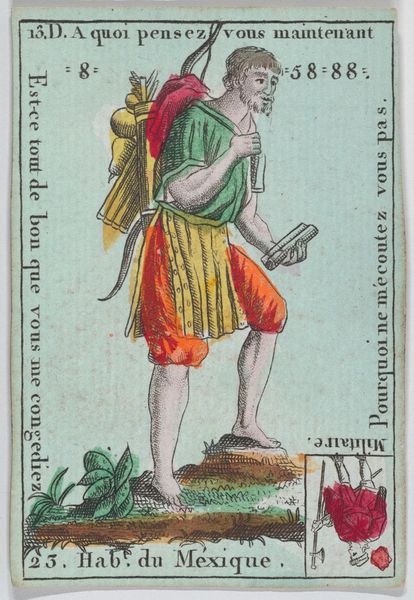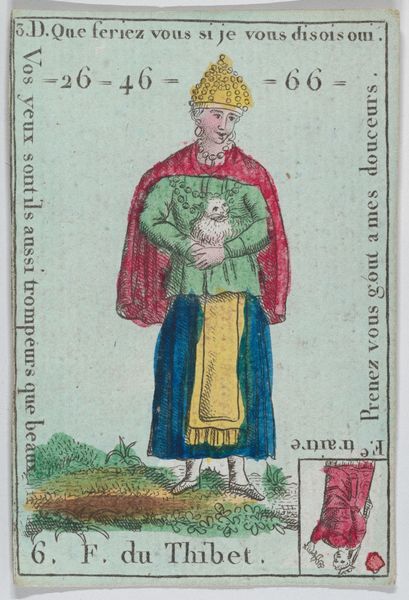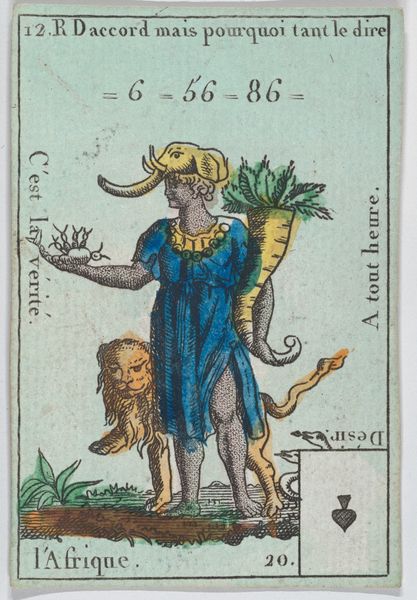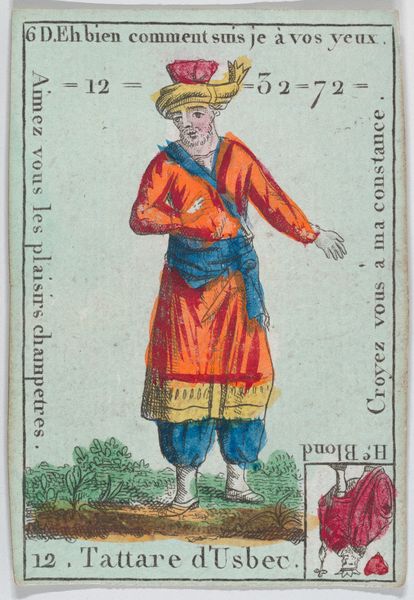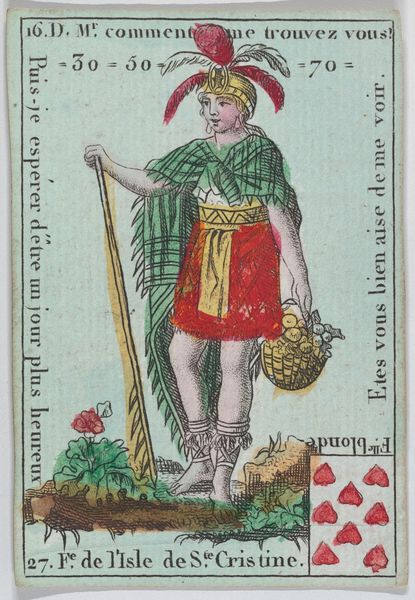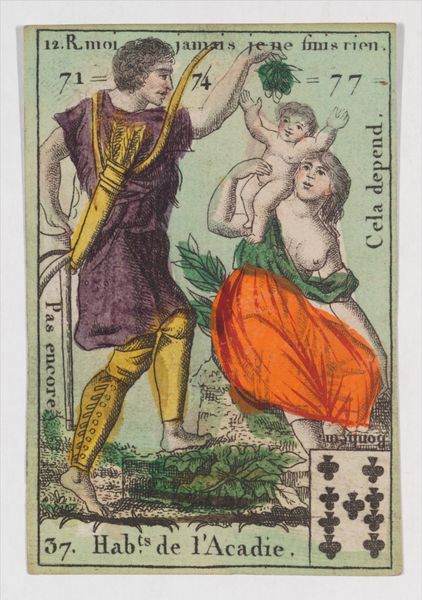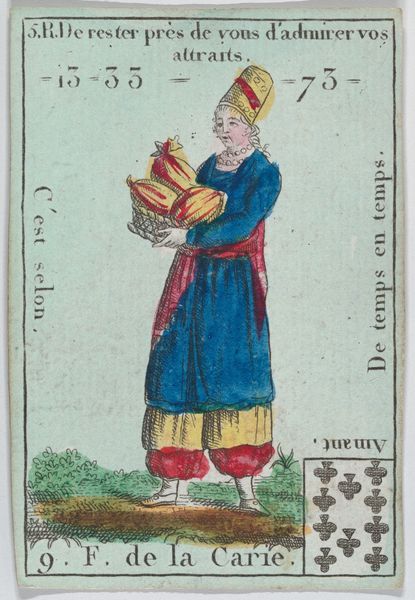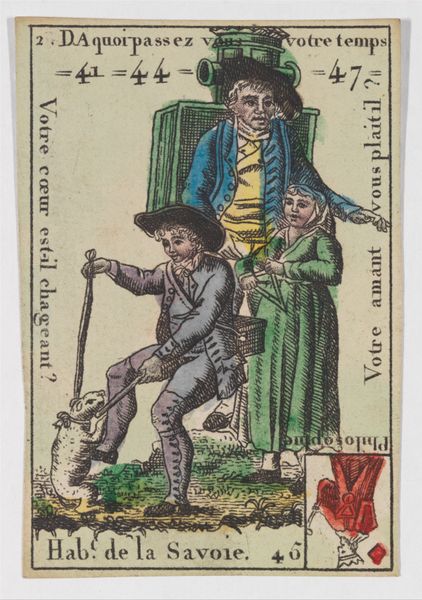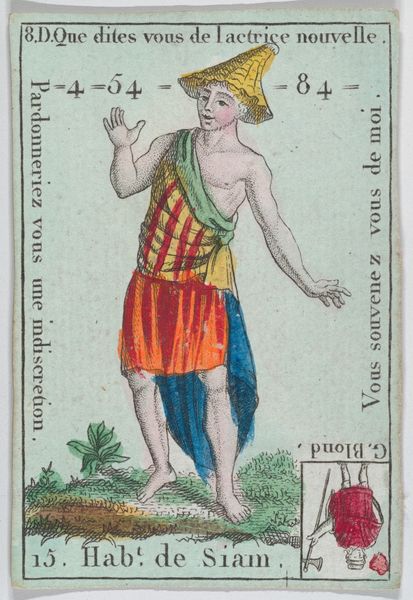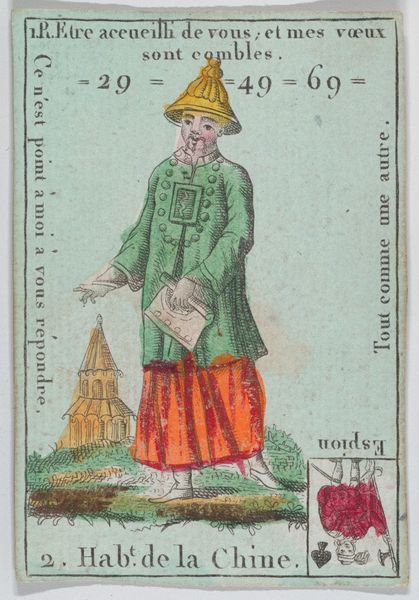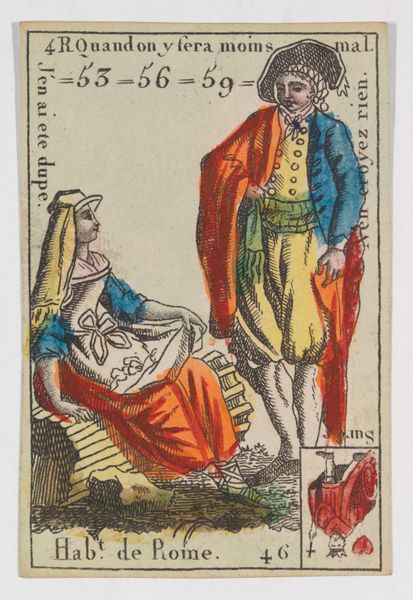
Hab.t du Thibet from playing cards "Jeu d'Or" 18th century
0:00
0:00
drawing, coloured-pencil, print
#
drawing
#
coloured-pencil
#
animal
# print
#
coloured pencil
#
men
#
genre-painting
Dimensions: 3 3/16 × 2 1/16 in. (8.1 × 5.3 cm)
Copyright: Public Domain
Curator: This playing card, "Hab.t du Thibet," which translates to "Inhabitant of Tibet," comes to us from the 18th century. Created by an anonymous artist, it's a lovely example of a genre painting rendered in print, drawing, and colored pencil. Editor: Oh, it has a whimsical feel! A dapper man in blue holding some sort of illuminated box, and is that his grumpy cat staring up at him? The whole thing feels very storybook. Curator: Indeed. It's tempting to view this card simply as a charming depiction of exoticism. But we should delve into the context of 18th-century European views of Tibet. Representations were often shaped by limited understanding and romanticized ideals. This piece is part of a "Jeu d'Or" or "Game of Gold", offering us insight into the power dynamics and prevailing colonial gaze toward other cultures in this era. Editor: That's a fair point. I was just drawn to the surface level imagery but I can see what you're saying about the other layers. It kind of spoils the fun of it, knowing there’s that colonial backdrop. But still...that glowing box is interesting, isn't it? It feels like the source of some kind of magical power. I wonder what the text in French around the image means. Curator: The phrases translate to: "What do you desire of me?" and "What must I do to please you?" and lastly, "Have pity on my extreme love." They're curious pronouncements, potentially connected to courtly love traditions, and underscore how societal concepts and narratives permeated even popular entertainments of the time. The figure, holding what you correctly observed is some sort of beacon, along with the text, points to themes of desire and service. Editor: I can appreciate it, I think. The execution of the drawing is quite fine. You’ve nudged me to ponder the intentions behind this era’s idea of “worldliness." I suppose I got lost in the colours and little cat. Curator: It's a testament to the layered nature of art; something can simultaneously possess aesthetic appeal and reflect problematic socio-political currents. Hopefully this dialogue has stirred our audience’s thinking! Editor: Yes, absolutely. It proves that even playing cards can deal us unexpected food for thought!
Comments
No comments
Be the first to comment and join the conversation on the ultimate creative platform.
